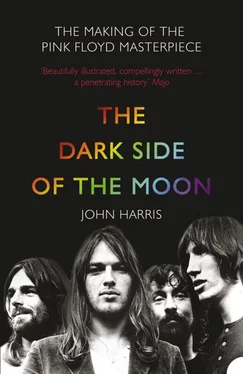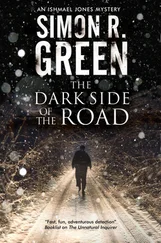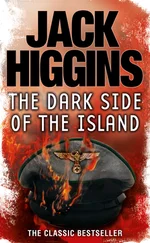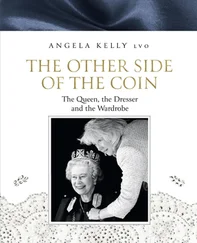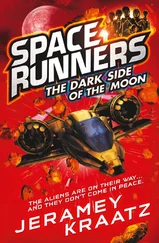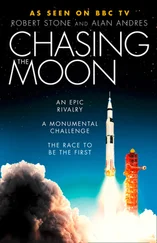No matter that Pink Floyd’s The Dark Side of the Moon had already been polished up to mark its twentieth anniversary in 1993; having been remixed afresh, it was about to be packaged up in newly designed artwork, and re-released yet again. Its ‘30th Anniversary SACD Edition’ would appear two months later, buoyed by an outpouring of nostalgia, and the quoting of statistics that had long been part of its authors’ legend.
The fact that they had the ring of cliché mattered little; Dark Side ’s commercial achievements were still mind-boggling. In the three decades since it appeared, the album had amassed worldwide sales of around thirty million. In its first run on the US album charts, it clocked up no less than 724 weeks. In the band’s home country, it was estimated that one in five households owned a copy; in a global context, as Q magazine once claimed, with so many copies of Dark Side sold, it was ‘virtually impossible that a moment went by without it being played somewhere on the planet’.
That afternoon at Compass Point, Waters devoted a couple of hours to musing on the record’s creation, and its seemingly eternal afterlife. ‘I have a suspicion that part of the reason it’s still there is that successive generations of adolescents seem to want to go out and buy The Dark Side of the Moon at about the same time that the hormones start coursing around the veins and they start wanting to rebel against the status quo,’ he said. When asked what the record said to each crop of new converts, he scarcely missed a beat: ‘I think it says, “It’s OK to engage in the difficult task of discovering your own identity. And it’s OK to think things out for yourself.”’
As he explained, Dark Side had all kinds of themes: death, insanity, wealth, poverty, war, peace, and much more besides. The record was also streaked with elements of autobiography, alluding to Waters’s upbringing, the death of his father in World War II, and the fate that befell Syd Barrett, the sometime creative chief of Pink Floyd who had succumbed to mental illness and left his shell-shocked colleagues in 1968. What tied it all together, Waters said, was the idea that dysfunction, madness and conflict might be reduced when people rediscovered the one truly elemental characteristic they had in common: ‘the potential that human beings have for recognizing each other’s humanity and responding to it, with empathy rather than antipathy’.
In that context, there was no little irony about the terms in which he described the album’s place in Pink Floyd’s progress. In Waters’s view, the aforementioned statistics concealed the Faustian story of the band finally achieving their ambitions, and thus beginning the long process of their dissolution. ‘We clung together for many years after that – mainly through fear of what might lie beyond, and also a reluctance to kill the golden goose,’ he said. ‘But after that, there was never the same unity of purpose. It slowly became less and less pleasant to work with each other, and more and more of a vehicle for my ideas, and less and less to do with anyone else, so it became less and less tenable.’ In the words of Rick Wright, at the time Dark Side was created, ‘it felt like the whole band were working together. It was a creative time. We were all very open .’ Thereafter, Waters became so commanding that the possibility of any such joint endeavour was progressively closed down.
Naturally, you could hear some of this in the music. The band’s collective personality on Dark Side is warmly understated – a quality embodied in the gentle vocal blend of Wright and David Gilmour – and most of the sentiments expressed are intentionally universal: within the sea of personal pronouns in Waters’s lyrics, none occurs as often as ‘you’. From 1975’s Wish You Were Here onwards, however, Waters recurrently vented the very specific concerns of an increasingly troubled rock star. Underlining the change, as of Pink Floyd’s next album, 1977’s rather bilious Animals , Gilmour’s vocals were nudged to one side, while Waters’s unmistakable mewl became the band’s signature.
All this reached its conclusion on The Wall , the 1979 song-cycle-cum-grand-confessional-and-concert-spectacular that, in financial terms at least, achieved feats that even Dark Side hadn’t managed. Arguably the greatest achievement on Dark Side is ‘Us and Them’, a lament for the human race’s eternal tendency to divide itself into warring factions. By the time of this new project, which Waters still believes is of a piece with the band’s best work (‘I think The Wall is as good as The Dark Side of the Moon – I think those are the two great records we made together’), Pink Floyd’s music suggested one such example: Roger Waters versus the rest of the world.
Where Dark Side oozed a touching generosity of spirit, The Wall was bitterly misanthropic. Though the former combined its melancholy with hints of redemptive optimism, the latter seemed unremittingly bleak. And if the 1973 model of Pink Floyd had been a genuinely collective endeavour, by 1979, Gilmour, Wright and Nick Mason were very much supporting players (indeed, Wright had been sacked during The Wall sessions). All this reached a peak with 1983’s The Final Cut – according to its credits, ‘A requiem for the post-war dream by Roger Waters, performed by Pink Floyd.’ In its wake, Waters expressed the opinion that the band was ‘a spent force creatively’, announced his exit, and assumed that the story had drawn to a close. At least one account of this period claims that Waters’s parting shot to his colleagues was ‘You fuckers – you’ll never get it together.’
Much to Waters’s surprise – and against the backdrop of a great deal of legal tussling – Gilmour eventually decided to prolong the band’s life, creating his own de facto solo record, 1987’s A Momentary Lapse of Reason , and then enlisting Mason and Wright – the latter as a hired hand rather than an equal partner – for a world tour that found the group earning record-breaking receipts and settling into the life of a stadium attraction. In 1994, they released their second post-Waters album, The Division Bell , and commenced a vast world tour partly sponsored by Volkswagen. ‘I see no reason to apologize for wanting to make music and earn money,’ said Gilmour. ‘That’s what we do. We always were intent on achieving success and everything that goes with it.’
Waters, watching from afar, could not quite believe that Pink Floyd now denoted a group whose live presentations were built around an eight-piece band, and whose latest album featured songs credited to Gilmour and his wife, an English journalist and writer named Polly Samson. ‘I was slightly angry that they managed to get away with it,’ he said in 2004. ‘I was bemused and a bit disappointed that the Great Unwashed couldn’t tell the fucking difference … Well, actually they can. I’m being unkind. There are a huge number of people who can tell the difference, but there were also a large number of people who couldn’t. But when the second album came out … well, it had got totally Spinal Tap by then. Lyrics written by the new wife. Well, they were! I mean, give me a fucking break! Come on! And what a nerve: to call that Pink Floyd. It was an awful record.’
So it was that Gilmour and Waters had arrived at the impasse that defined their relations in the early twenty-first century. The upshot in 2003 was clear enough: a record partly based on the desirability of greater human understanding was being promoted by two men who had not spoken for at least fifteen years.
Читать дальше
